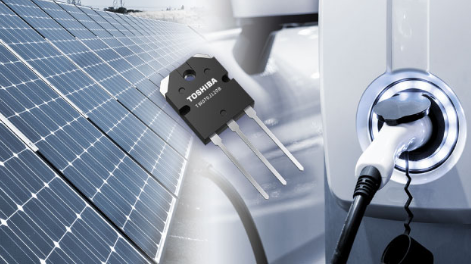- 型号 & 关键词搜索
- 交叉搜索
- 参数搜索
- 库存查询与购买
This webpage doesn't work with Internet Explorer. Please use the latest version of Google Chrome, Microsoft Edge, Mozilla Firefox or Safari.
请输入3个以上字符 Search for multiple part numbers fromhere.
The information presented in this cross reference is based on TOSHIBA's selection criteria and should be treated as a suggestion only. Please carefully review the latest versions of all relevant information on the TOSHIBA products, including without limitation data sheets and validate all operating parameters of the TOSHIBA products to ensure that the suggested TOSHIBA products are truly compatible with your design and application.Please note that this cross reference is based on TOSHIBA's estimate of compatibility with other manufacturers' products, based on other manufacturers' published data, at the time the data was collected.TOSHIBA is not responsible for any incorrect or incomplete information. Information is subject to change at any time without notice.
请输入3个以上字符
MOSFET与IGBT之间有何区别?
The main differences between IGBTs and MOSFETs are their on-resistance and switching speed. MOSFETs have a fast-switching speed, but in order to increase the breakdown voltage, the concentration of the n- drift layer must be reduced, resulting in a high series resistance (n- drift resistance). Because IGBTs are bipolar devices, they use the conductivity modulation effect to reduce the n- drift resistance when on, but this effect generates a tail current when off, slowing down the switching speed. MOSFETs are unipolar devices that use only electrons as carriers, while IGBTs are bipolar devices that use both electrons and holes.

1. Structure
IGBT (Insulated Gate Bipolar Transistor) is also a voltage-controlled element with an insulated gate, similar to MOSFET (Metal Oxide Semiconductor Field Effect Transistor). IGBT has a structure in which a p+ layer is added to the n+ layer on the back side (drain side) of the MOSFET chip, and this layer functions as the collector. Fig. 1 and 2 show the structure and equivalent circuit of IGBT and MOSFET. An important feature of IGBT is conductivity modulation.

2. Operation
Compared to bipolar junction transistors (BJTs), MOSFETs and IGBTs have the advantage of having high input impedance and fast switching speeds due to the insulated gate.
In MOSFETs and IGBTs, when the voltage between the gate and source or between the gate and emitter is equal to or greater than the threshold voltage, conduction occurs between the drain and source or between the collector and emitter, and the MOSFET turns on.
The on-resistance of a MOSFET is greatly affected by the resistance of the n- drift layer. In order to increase the breakdown voltage of a MOSFET, it is necessary to reduce the concentration of the n-drift layer and make it thicker, which results in an issue of higher on-resistance. On the other hand, IGBTs reduce the on-resistance by reducing the resistance of the n- drift layer through conductivity modulation, as will be described below.

Fig. 3 shows the behavior of carriers (holes and electrons) in the conductivity modulation of an IGBT. When no conductivity modulation occurs in an IGBT, the n- layer contains a small amount of electrons, but when in the on state, holes are injected from the p+ collector layer into the n- layer. If this continues, the density of holes in the n- layer will exceed the equilibrium value. To maintain charge neutrality, electrons are injected from the n+ layer through the channel into the n- drift layer, maintaining electrical neutrality. This increases the density of both majority carriers (holes) and minority carriers (electrons) in the n- drift layer, significantly improving conductivity. Therefore, the on-resistance of an IGBT is lower than that of a MOSFET, and the on-voltage is also lower.
When the gate-source or gate-emitter of a MOSFET or IGBT is short-circuited or reverse-biased, the gate charge is discharged, the channel disappears, and the MOSFET or IGBT turns off. However, in an IGBT, excess carriers (electrons and holes) accumulate in the n-region due to conductivity modulation when the MOSFET is on. In a MOSFET, the drain current is cut off more quickly than in an IGBT, but when an IGBT is turned off, it takes time for the collector current to continue to flow as it decreases until the excess carriers dissipate. This gradually decreasing current is called the tail current.
3. Comparison of MOSFET and IGBT characteristics
There are three typical types of transistors: bipolar transistors (BJT), MOSFET, and IGBT. Table 1 shows the general performance and characteristics of each transistor. Due to the characteristics of drive power and switching speed of drive circuits, BJTs are rarely used for switching applications in the power electronics field, and MOSFETs and IGBTs are mainly used, taking advantage of their respective features.
Fig. 4 shows the on-voltage characteristics of a 30A class IGBT and MOSFET (SJMOS: Super-junction MOSFET). In the low current region, MOSFETs exhibit lower on-voltage characteristics than IGBTs, but in the high current region, IGBTs are superior, and this tendency is particularly noticeable under high temperature conditions. Also, compared to MOSFETs, which are unipolar devices, IGBTs have larger switching losses, so they are often used at switching frequencies lower than around 20 kHz.
| 类型 | 双极晶体管 | MOSFET | IGBT |
|---|---|---|---|
| 栅极(基极)驱动 | 电流驱动 (低输入阻抗) |
电压驱动 (高输入阻抗) |
电压驱动 (高输入阻抗) |
| 栅极(基极)驱动电路 | 复杂的开关应用 | 相对比较简单 | 相对比较简单 |
| 导通电压特性 | 低VCE(sat) | 导通电阻×漏极电流 无内置电压(*1) |
低VCE(sat) 有内置电压(*1) |
| 开关时间 | 慢 (载流子积累效应) |
超高速 (单极器件) |
高速 (速度高于双极晶体管,但低于MOSFET) |
| 寄生二极管 | 不存在 | 存在(体二极管) | 仅存在于RC-IGBT中 |

相关信息
The following documents also contain related information.
参数搜索
IGBT/IEGT
常见问题(FAQ)
(*1)内置电压是器件固有的阈值电压。这里的内置电压是指正向阈值电压。
* Company names, product names, and service names used in this FAQ may be of their respective companies.



